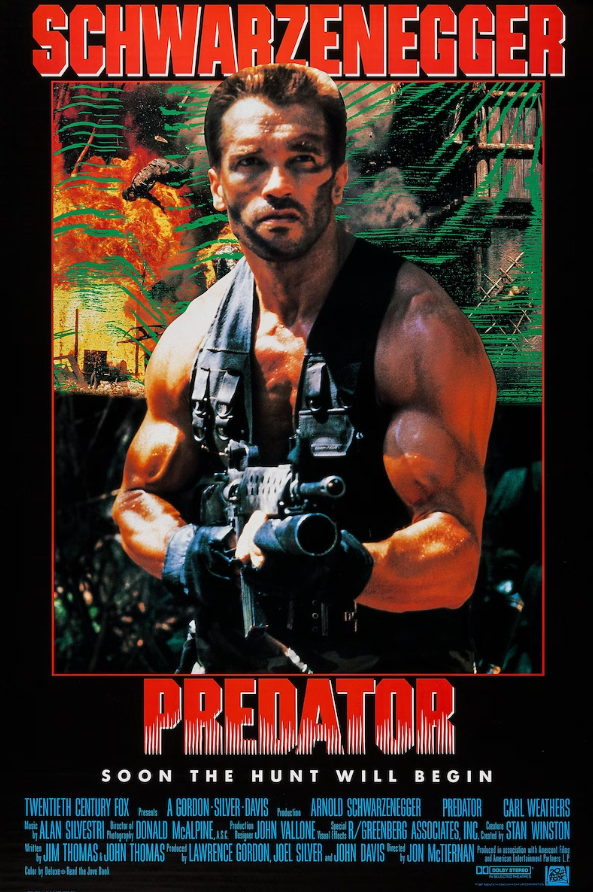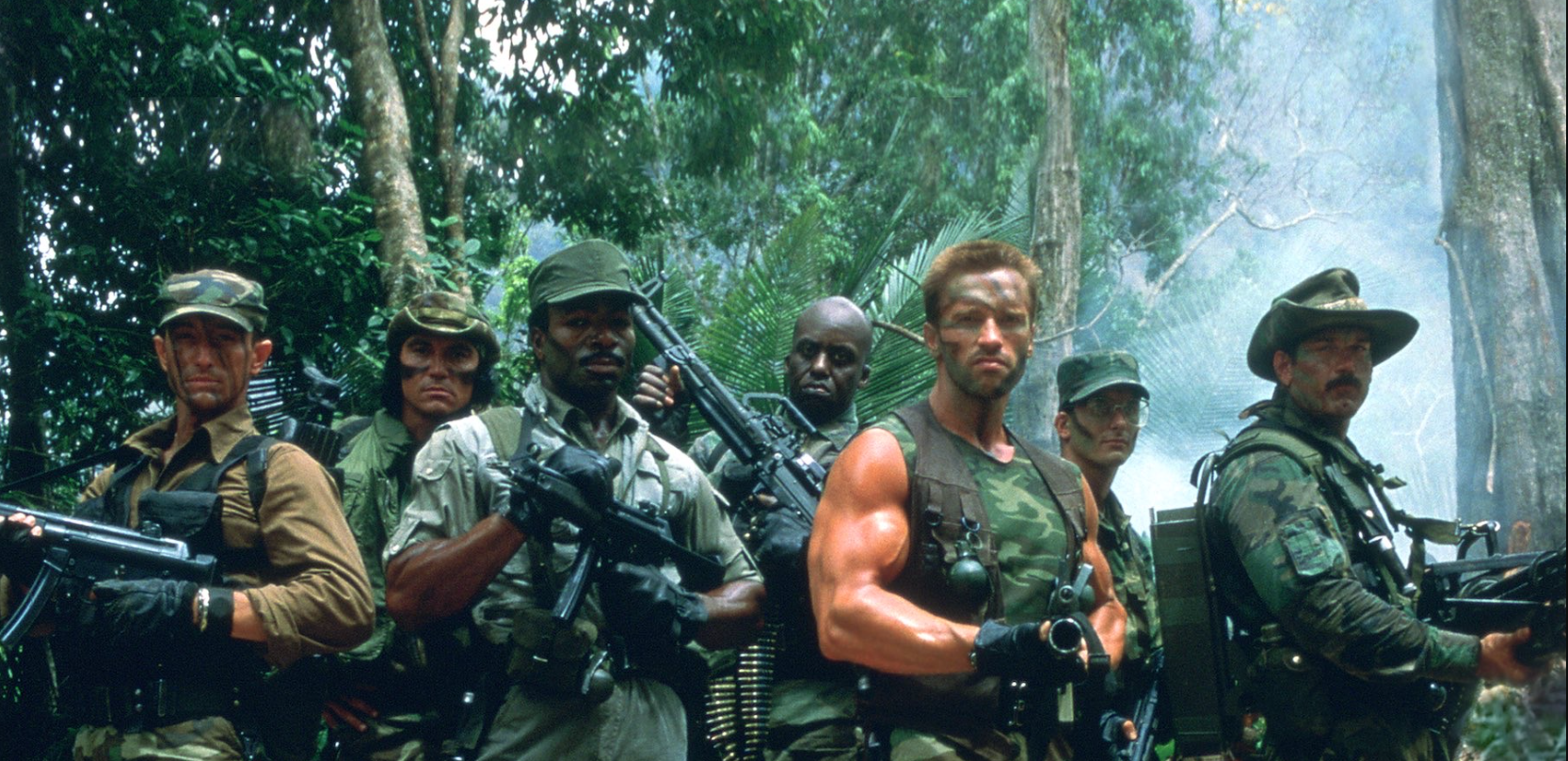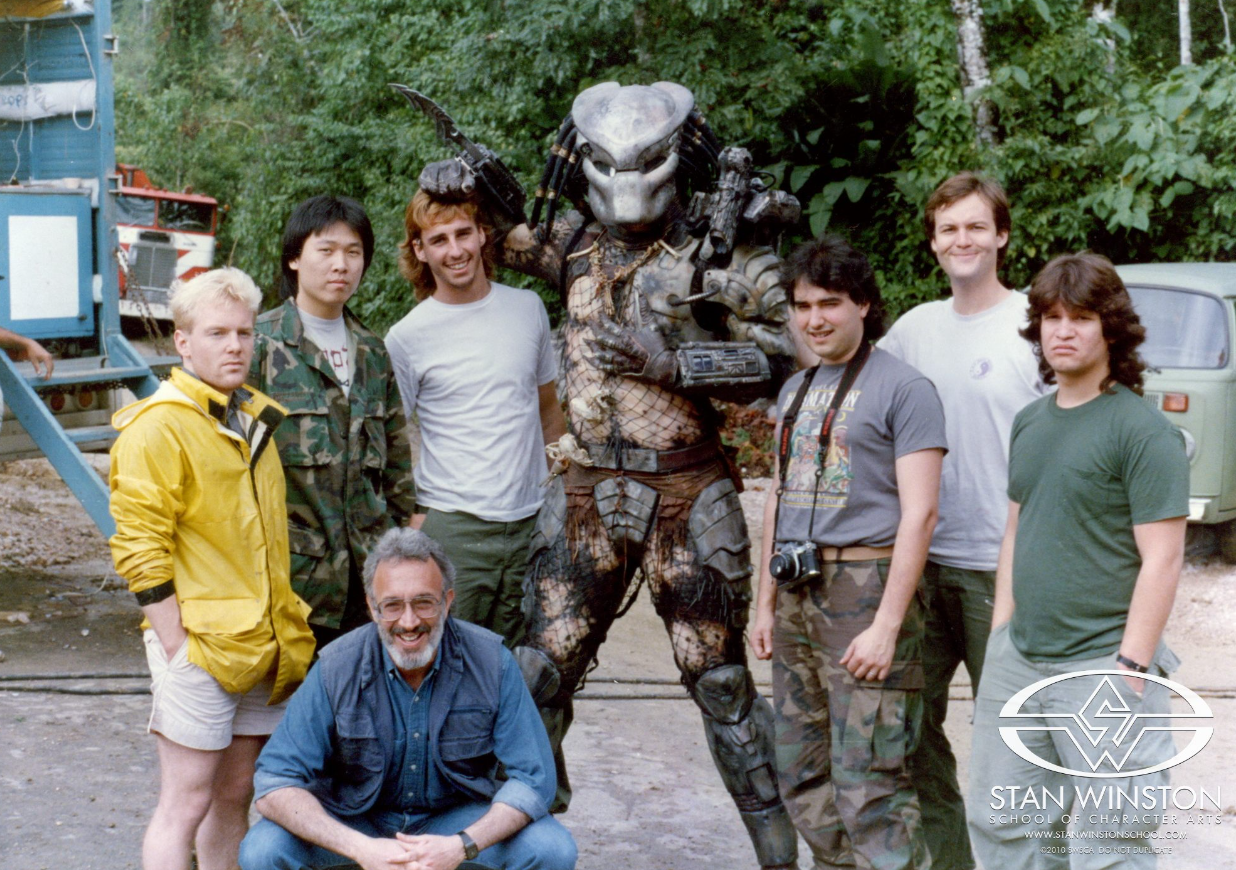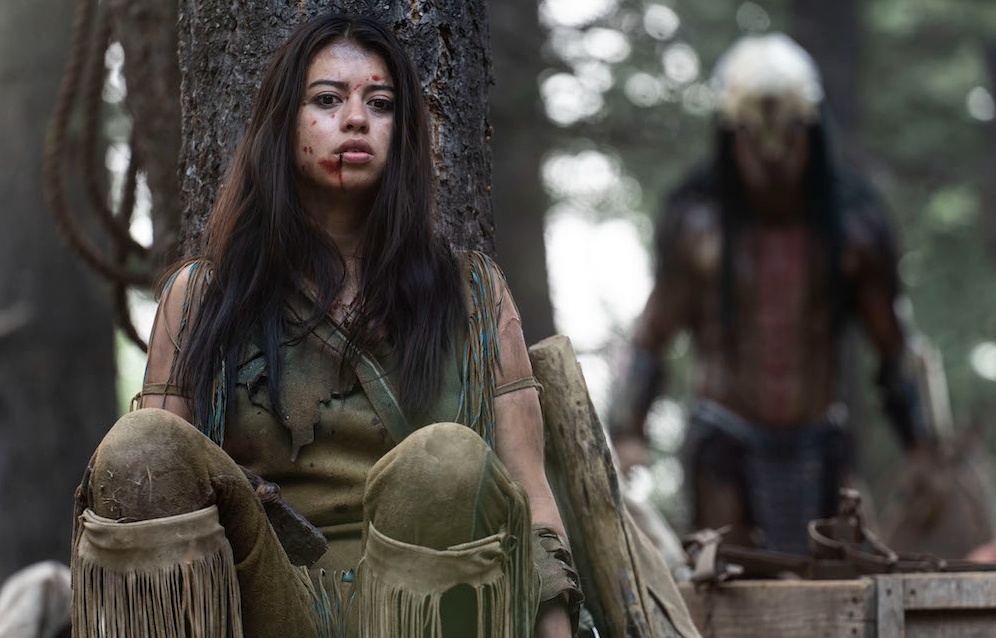"Predator" (1987): A Classic Sci-Fi Thriller That Shaped Pop Culture
Released on this day in 1987, "Predator" quickly became an iconic film that blended science fiction, action, and horror into an unforgettable cinematic experience. Starring Arnold Schwarzenegger, Carl Weathers, Shane Black, Bill Duke, Jesse Ventura, Richard Chaves, and Sonny Landham, the film boasted an impressive cast that brought their characters to life with intensity and charisma. Directed by John McTiernan and featuring the imaginative creature design of Stan Winston, "Predator" faced numerous challenges during its production but ultimately emerged as a critical and commercial success. This article delves into the making of the film, its impact on pop culture, and the lasting legacy it has left behind.
Pre-production and Casting:
The genesis of "Predator" began with the script penned by brothers Jim and John Thomas, which initially featured a creature known as the "Hunter."
The casting process for "Predator" played a crucial role in assembling a talented ensemble that would bring the characters to life with authenticity and charisma. The filmmakers aimed to create a diverse group of actors, each bringing their own unique strengths to the team of special forces soldiers.
Arnold Schwarzenegger, at the height of his action star status, was cast as Major Alan "Dutch" Schaefer, the fearless leader of the team. Schwarzenegger's physical presence, commanding presence, and ability to exude both strength and vulnerability made him the perfect choice for the role. His involvement in the film elevated its profile and contributed significantly to its commercial success.
Carl Weathers, known for his role as Apollo Creed in the "Rocky" franchise, was cast as CIA operative Dillon. Weathers' natural charisma and acting prowess added depth and complexity to the character, creating an intriguing dynamic between Dillon and Dutch.
Shane Black, who had previously collaborated with director John McTiernan on the screenplay for "Lethal Weapon," was cast as Hawkins, the team's wisecracking and lovable communications specialist. Black's sharp wit and comedic timing brought a levity to the intense and suspenseful narrative.
Bill Duke, Jesse Ventura, Richard Chaves, and Sonny Landham rounded out the ensemble, each bringing their own unique talents and personalities to their respective characters. Duke, known for his intense performances, portrayed the stoic and battle-hardened Mac. Ventura, a former professional wrestler turned actor, delivered a memorable turn as the brash and gung-ho Blain. Chaves portrayed Poncho, a loyal and dependable member of the team, while Landham brought a powerful presence to the role of Billy, a skilled and intuitive tracker.
The pre-production phase of "Predator" involved meticulous planning and preparation to bring the film's vision to life. This included scouting locations, securing permits, and assembling a dedicated crew to handle the complex logistical challenges of shooting in the remote jungles of Puerto Vallarta, Mexico.
Director John McTiernan, known for his masterful handling of action and suspense, was brought on board to helm the project. McTiernan's keen eye for visuals and his ability to create tension and build suspense elevated "Predator" beyond a standard action film, infusing it with a palpable sense of dread.
One of the key elements of the pre-production process was the collaboration between director John McTiernan and special effects artist Stan Winston. McTiernan and Winston worked closely together to refine the design of the Predator and ensure that it would be visually striking and believable on screen. Winston's previous experience in creature design, such as his work on "Aliens" and "The Terminator," made him a natural choice for bringing the otherworldly creature to life.
Overall, the casting choices and pre-production efforts for "Predator" were instrumental in shaping the film's narrative and visual impact. The combination of a talented ensemble cast, led by Schwarzenegger, and the meticulous planning and collaboration between McTiernan and Winston set the stage for a thrilling and memorable cinematic experience.
Stan Winston's Predator Design:
Stan Winston, a legendary special effects artist and creature designer, played a pivotal role in the creation of the iconic Predator character. Tasked with bringing the extraterrestrial hunter to life, Winston and his team embarked on an innovative and groundbreaking design process.
Winston's approach to designing the Predator involved blending various elements from different species to create a truly unique and menacing creature. The initial concept for the Predator came from a drawing by the film's special effects supervisor, Joel Hynek, which depicted an insect-like creature with mandibles. Winston and his team then began refining and expanding upon this concept, transforming it into the fearsome creature we know today.
One of the most striking features of the Predator design is its combination of reptilian and insectoid attributes. Winston incorporated reptilian features such as scaly skin and an elongated head, giving the creature a primal and predatory appearance. The addition of mandibles, inspired by insects, added an extra layer of menace and otherworldliness to the creature's facial structure. The mandibles were designed to be functional, allowing the Predator to open its mouth wider and further emphasize its otherworldly nature.
In addition to its unique physical features, the Predator's technological prowess was a crucial aspect of its design. Winston and his team incorporated advanced alien technology into the character's armor and weaponry, blending organic and mechanical elements seamlessly. The Predator's iconic shoulder-mounted plasma caster, retractable wrist blades, and sophisticated camouflage capabilities added to its deadly and mysterious persona.
To bring the Predator to life on screen, Winston utilized a combination of practical effects and animatronics. Kevin Peter Hall, standing at an impressive 7'2" tall, portrayed the Predator, wearing a highly detailed suit that blended animatronic elements for the creature's head and intricate prosthetics for its body. This combination allowed for realistic movements and expressions, enhancing the believability of the character.
Stan Winston's design for the Predator not only established the creature as a formidable antagonist but also provided a visual icon that has stood the test of time. The attention to detail, innovative blending of different species' traits, and the incorporation of advanced technology resulted in a visually striking and memorable character that has become an integral part of popular culture.
The success of Winston's Predator design can be attributed not only to its aesthetic appeal but also to its ability to evoke a sense of awe, fear, and fascination in audiences. The combination of the creature's distinctive physicality, advanced technology, and mysterious nature has made it an enduring symbol in the realm of science fiction and has solidified Stan Winston's contribution as a master of creature design in the film industry.
Originally, Jean-Claude Van Damme was cast to play the Predator, but creative differences and logistical challenges led to his replacement by the towering Kevin Peter Hall, who brought the alien creature to life.
When Van Damme was brought on board, the filmmakers envisioned him as an agile and acrobatic opponent for the film's human characters. However, as production began, it became evident that the original Predator design hindered Van Damme's abilities as a martial artist. The original Predator suit was bulky and cumbersome, limiting Van Damme's mobility and restricting his martial arts movements.
Additionally, Van Damme's frustration reportedly stemmed from the lack of visibility and recognition his face would receive due to the Predator's fully enclosed mask. He desired a role that would showcase his talents as an actor and martial artist, leading to disagreements with the filmmakers regarding the direction of his character.
Ultimately, the decision was made to replace Van Damme with Kevin Peter Hall, who brought a different physicality to the role and allowed for a more imposing and menacing portrayal of the Predator. Kevin Peter Hall's height and slender build, combined with Stan Winston's revised creature design, provided the filmmakers with a more formidable and visually striking antagonist.
While Van Damme's departure from "Predator" was a disappointment for him personally, it proved to be a fortuitous turn of events for the film. The introduction of Kevin Peter Hall as the new Predator not only elevated the physicality and presence of the character but also allowed for a greater emphasis on the creature's intimidating qualities and unique abilities.
Although Van Damme's involvement in "Predator" was short-lived, the circumstances surrounding his departure added an interesting layer to the film's production history. The decision to replace him with Kevin Peter Hall ultimately led to the creation of one of the most iconic and enduring movie monsters of all time.
Production Challenges and Triumphs:
One of the primary challenges during production was the harsh shooting conditions in the jungles of Puerto Vallarta, Mexico. The dense and unforgiving terrain presented logistical hurdles, making it difficult for the crew to transport equipment and move swiftly. The remote location also meant limited access to amenities and resources, adding to the physical and mental strain on the cast and crew.
The intense heat and humidity of the jungle posed a significant challenge, causing discomfort and fatigue among the actors. The extreme temperatures took a toll on everyone involved, requiring frequent breaks and precautions to prevent heat-related illnesses. However, the oppressive atmosphere of the jungle contributed to the authenticity of the characters' struggle and added to the palpable tension of the film.
Furthermore, the extensive use of practical effects and stunts in "Predator" added another layer of complexity to the production. The film relied heavily on physical action sequences, including explosions, gunfire, and hand-to-hand combat. Coordinating these intricate scenes required meticulous planning, precise timing, and a skilled stunt team to ensure the safety of the cast and crew.
However, despite the challenges, the production team demonstrated resilience and adaptability. The tight-knit camaraderie among the cast members helped them overcome the physical and mental strains, fostering a sense of unity that translated onto the screen. Director John McTiernan's strong leadership and ability to navigate challenging situations played a vital role in keeping the production on track.
Reception and Pop Culture Impact:
When "Predator" was first released in theaters, it garnered mixed reviews from critics. However, its unique blend of genres, high-octane action, and Schwarzenegger's star power appealed to audiences, ultimately making it a commercial success. Over time, the film's popularity grew, solidifying its place as a cult classic and influencing subsequent generations of filmmakers and moviegoers.
The Predator's menacing design, the memorable one-liners delivered by the cast, and the intense battle sequences have become iconic elements of pop culture. The film's success led to a franchise that included sequels, crossovers, and spinoffs, such as "Predator 2" (1990), "Predators" (2010), and "The Predator" (2018), expanding the Predator mythology and keeping the franchise relevant in the modern era.
The latest addition to the Predator franchise was the 2022 film “PREY.” "PREY" builds upon the foundation laid by its predecessors as it presents a new group of humans being hunted by the predator with an updated and intense storyline. Moreover, the film pays homage to the original by staying true to the themes of survival and the suspenseful cat-and-mouse chase that made the franchise a fan favorite. Overall, "PREY" has succeeded in capturing the essence of the franchise and providing the audience with an exciting new chapter in the Predator universe.
Legacy and Enduring Influence:
The legacy of "Predator" extends far beyond its initial release, as the film has left an indelible mark on popular culture. The character of the Predator itself has become an iconic figure, recognized by fans worldwide. Its unique design, combining reptilian and insectoid features with advanced technology, has inspired countless imitations and homages in films, video games, and other forms of media. The Predator's image has become synonymous with the notion of an unstoppable and ruthless hunter, making it one of the most recognizable movie monsters of all time.
Furthermore, "Predator" introduced audiences to a new blend of genres, seamlessly merging sci-fi, action, and horror elements. The film's gritty atmosphere, intense action sequences, and suspenseful storytelling set a new standard for the genre, influencing subsequent films and inspiring filmmakers to explore similar thematic territories. The iconic "Predator vision" that showcases the world through the alien creature's heat-seeking eyes has been imitated and referenced in numerous films, demonstrating the enduring impact of the film's visual language.
The success of "Predator" also paved the way for an expanded universe of sequels, spinoffs, and crossovers. The subsequent films further explored the mythology of the Predator species, its history, and encounters with other iconic characters. This expanded universe has provided fans with new narratives, characters, and thrilling action, keeping the Predator franchise alive and relevant. Additionally, the concept of a formidable extraterrestrial predator hunting humans has become a recurring trope in various forms of entertainment, showcasing the lasting influence and enduring appeal of the original film.
Stay up to date with “The Dark Side Of Pop Culture” by following MacabreDaily on Instagram, Facebook, and Twitter.

















